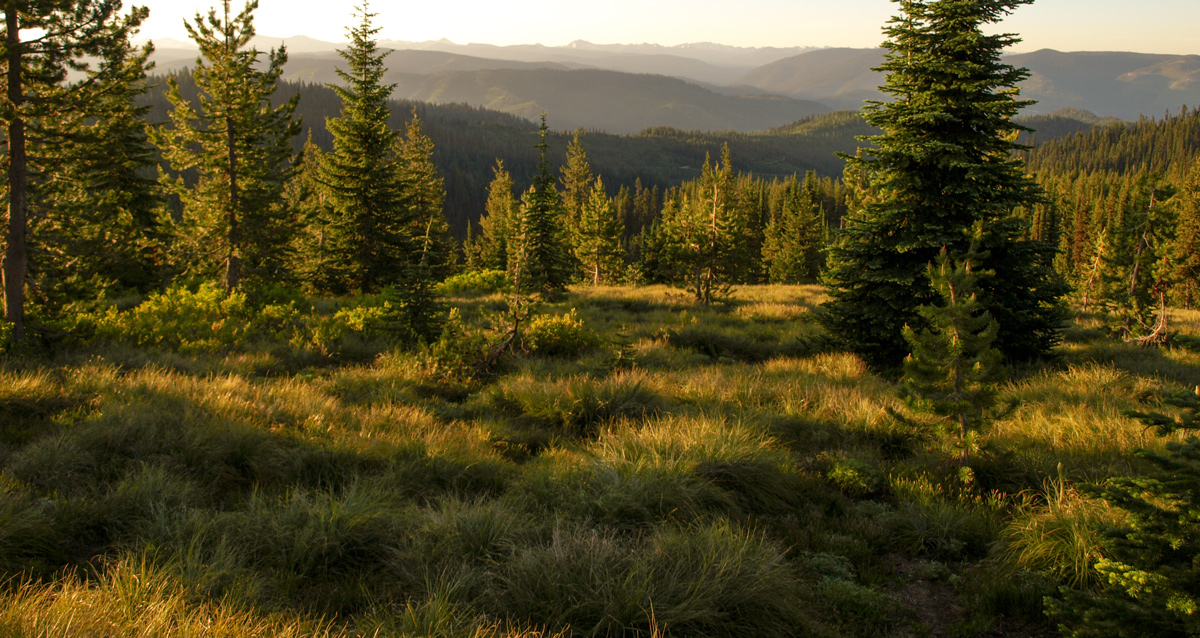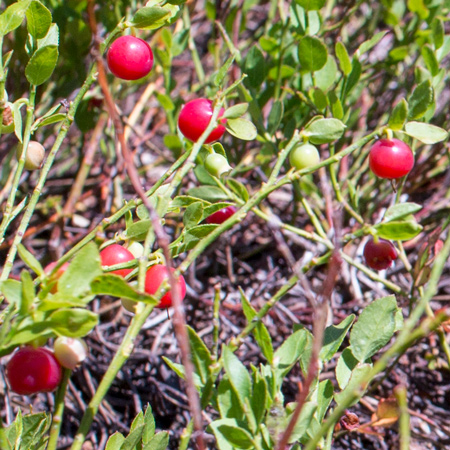Leaving Spring Mountain, the corps soon reaches the trail they used last fall to climb up from the Lochsa River along Wendover Ridge. The Nez Perce guides have them continue on the main trail along the Bitterroot divide. After thirteen miles, they encamp where there is good grass for the horses. Lewis describes the whortleberry, Vaccinium scoparium.
Good Grass
by Yellowstone Public Radio[1]Originally aired weekdays by Yellowstone Public Radio during the Bicentennial observance of 2003-2006. Narrated by Hal Hansen. Scripts by Whit Hansen and Ed Jacobson. Produced by Leni Holliman. © … Continue reading
13-Mile Camp
© 1 July 2009 by Kristopher K. Townsend. Permission to use granted under the Creative Commons Attribution-Share Alike 4.0 International license.
13-Mile Camp
about eleven O’clock we arrived at an untimbered side of a mountain with a Southern aspect just above the fishery here we found an abundance of grass for our horses as the Indians had informed us. as our horses were very hungary and much fatiegued and from information no other place where we could obtain grass for them within the reach of this evening’s travel we determined to remain at this place all night having come 13 miles only.
—Meriwether Lewis
Gaunt Horses
several of our horses had straggled to a considersble distance in surch of food but we were fortunate enough to find them in good time they look extreemly gant this morning, however the [Nez Perce] indians informed us that at noon we would arrive at a place where there was good food for them.
—Meriwether Lewis
A Better Way Home
we continued our rout along the dividing ridge passing one very deep hollow and at the distance of six miles passed our encampment of the [15th] of September last, one and a half miles further we passed the road which leads by the fishery falling in on the wright immediately on the dividing ridge.
—Meriwether Lewis
Traveling Over Snow
the whole of the rout of this day was over deep snows. we find the traveling on the snow not worse than without it, as the easy passage it gives us over rocks and fallen timber fully compensate for the inconvenience of sliping, certain it is that we travel considerably faster on the snow than without it.
—Meriwether Lewis
Whortleberry
Vaccinium scoparium
Willow Ridge on the Lolo Trail, 24 July 2015. © by Kristopher K. Townsend. Permission to use granted under the Creative Commons Attribution-Share Alike 4.0 International license.
Whortleberry and Great Woodrush
there is a speceis of small whortleburry common to the hights of the mountains, and a speceis of grass with a broad succulent leaf which looks not unlike a flag; of the latter the horses are very fond, but as yet it is generally under the snow or mearly making it’s appearance as it confined to the upper parts of the highest mountains.—
—Meriwether Lewis
Weather Diary
State of the weather at rise
Wind at rise
State of the weather at 4 P.M. Wind at 4 P.M. fair S E fair S E nights are cool in these mountains but no frost.
—Meriwether Lewis[2]To assist the reader of this web page, the date column is not presented and some abbreviations have been spelled out.
Notes
| ↑1 | Originally aired weekdays by Yellowstone Public Radio during the Bicentennial observance of 2003-2006. Narrated by Hal Hansen. Scripts by Whit Hansen and Ed Jacobson. Produced by Leni Holliman. © 2003 by Yellowstone Public Radio. |
|---|---|
| ↑2 | To assist the reader of this web page, the date column is not presented and some abbreviations have been spelled out. |


